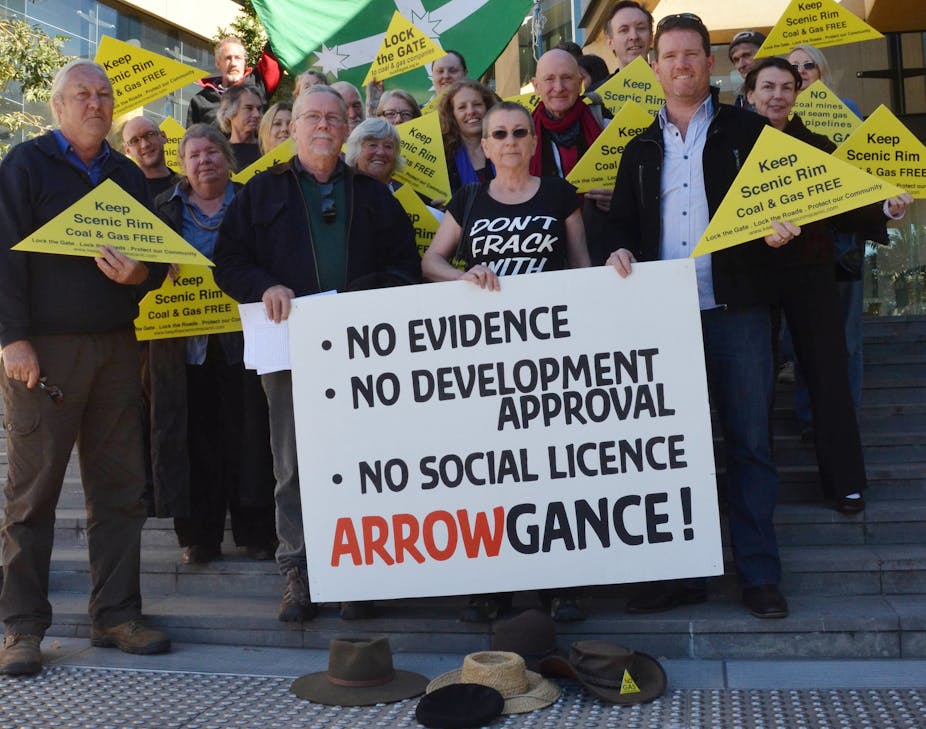The concept of a ‘social licence to operate’ (SLO) is not new. It has been used widely in the mining and minerals industry for some 15 years where it has generally described the informal acceptance or approval a local community extends to a mining operation or development.
In the Australian context, the Minerals Council of Australia (MCA) has described SLO as representing an “unwritten social contract” that reflects the relationship between companies and the communities in which they operate; a relationship the MCA views as being grounded in both a company’s on-ground performance and the level of local community trust that exists.
By this description, a SLO has been something that has very much existed in the local landscape where the focus has been on the site of impact and working with the expectations of those who are directly affected by a mining operation. Mining companies well understand the importance of “being a good neighbour” to their own ability to operate, and profit, from a mining development.
However, as the term has come to be more widely applied (across various industries including forestry, farming and wind energy among others) and by a broader range of stakeholders (beyond the more localised company and community context), there has also been increasing debate in the academic literature over how to define SLO and what (if any) value the concept brings to our understanding of the social aspects of sustainable development.
In terms of addressing some of these persistent questions about SLO, CSIRO researchers recently interviewed a small sample of representatives from the Australian mining and minerals industry in order to canvass their views on the current theory and practice of SLO within the industry. While this sample represents only the industry’s perspective, some of the responses highlight how the increasing adoption of SLO beyond its traditionally narrow membership of company and community at the site of impact might be changing the way we use and understand what constitutes a SLO.
Operating at the intersection of formal and informal licences
The language of SLO perhaps gained initial appeal within the industry because it mirrored the language of the environmental licences issued by governing authorities. However while the language itself might reflect certain parallels, in practice the two are quite distinct.
Respondents to the CSIRO research described an environmental licence as a formal permission issued by government in line with legislated requirements, whereas they saw a social licence as something their companies needed to earn from their communities.
Legal and social licences also vary in their temporal nature with the environmental licence being issued by government and enduring as long as a company complies with the relevant conditions of the licence whereas a social licence is constantly being renewed and negotiated; reflecting the natural fluctuations in the status and quality of a relationship between a company and a community.
While it has been claimed that the concept of SLO emerged as a result of governance arrangements increasingly shifting responsibility away from the state to other actors, recent experience in the Australian context suggests that government actors are now starting to adopt and use the term themselves. This raises the question as to what role government is to play in negotiating the relationship between companies and communities. As our industry respondents noted, the role of government sits squarely with the regulation of industry practice. But how does this apply to a SLO?
Legislating industry’s relationship with community
One recent example that reflects this shift towards government regulation of company-community interactions are the Queensland Government’s guidelines for preparing a social impact management plan (SIMP); a new requirement for all new or expanded major resource development projects in the state.
As part of these guidelines, it is noted that a SLO - which is described in the guidelines as “world best practice” - complements the regulatory licence issued by government and that industry has a shared responsibility alongside government “to facilitate the development of strong and sustainable communities”.
Apart from providing a framework for defining the shared responsibilities of industry and government, the SIMP guidelines are aimed at ensuring “meaningful stakeholder engagement” occurs throughout a project life cycle. Those that support the introduction of SIMPs suggest it is a way of bringing underperforming operators in line with best practice. However, others have cautioned that extending these requirements may also place communities at increased risk of “consultation fatigue”.
This may mean that increased focus on legislating the procedural aspects of consultation and engagement comes at the expense of relational capacity, trust and goodwill. This very criticism has already been levelled against the perceived “audit culture” that dominates corporate social responsibility and accountability in the mining industry.
Thus as government appears to be emerging as a third critical stakeholder in negotiating the mining and minerals industry’s SLO with the Australian public, the question appears to be just how will these efforts enhance the development of more meaningful relationships with communities and achieve a more representative reflection of community expectations in how both government and industry meet their collective responsibilities?
The CSIRO research referred to in this article was supported exclusively by CSIRO funding through the Minerals Down Under National Research Flagship.

